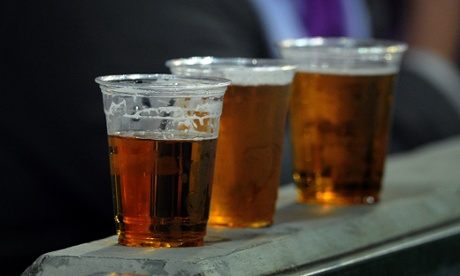National drug survey finds smoking on the decline and methamphetamine use stable, but people in remote areas much more likely to use drugs

Young people are smoking less and are increasingly abstaining from alcohol, but Australians who do drink are doing so at harmful levels, a government report on drug use has found.
The 2013 National Drug Strategy Household Survey revealed the proportion of 18–24-year-olds who had never smoked rose from 58% to 77% between 2001 and 2011.
The proportion of 12- to 17-year-olds abstaining from alcohol increased from 64% to 72% in the same period.
However two-fifths of Australians either smoked daily, drank alcohol in ways that put them at risk of harm, or had used an illicit drug in the previous 12 months.
The survey builds on findings released by the Australian Institute of Health and Welfare (AIHW) in June, with data collected from 24,000 people across Australia.
“Half of daily smokers had consumed alcohol at risky quantities, either more than two standard drinks a day on average or more than four on a single occasion at least once a month,” institute spokesman Geoff Neideck said.
“Over one-third of daily smokers had used an illicit drug in the previous 12 months, 60% of recent illicit drug users also drank alcohol in risky quantities, and 31% smoked daily.”
Daily tobacco smoking and risky drinking also rose as remoteness increased, the report found. An overall decline in daily smoking rates between 2010 and 2013 was driven by falls for people living in cities.
People living in remote areas were twice as likely to have used methamphetamines in 2013 as those in non-remote areas.
While methamphetamine use did not increase overall, the more potent form of the drug, crystal methamphetamine (ice), increasingly replaced the powdered form, known as speed.
There was no statistically significant change in illicit drug use across jurisdictions overall, the report found.
But there was a statistically significant rise in the misuse of pharmaceuticals, from 4.2% in 2010 to 4.7% in 2013.
The drug respondents reported as being most harmful was alcohol, with 34% naming it as the drug responsible for the most deaths. Almost five million Australians aged 14 and over were victims of an alcohol-related incident in 2013.
Patterns of risky drinking varied across jurisdictions, but those in the Northern Territory and Western Australia were more likely to consume alcohol in quantities that placed them at risk of an alcohol-related disease, illness or injury.
Professor Mike Daube, president of the McCusker Centre for Action on Alcohol and Youth, said overall it was encouraging that young people were taking note of public health messages about the risks of smoking and excessive drinking.
But he said there were still significant levels of preventable harm from alcohol abuse and that governments had no excuse not to act.
“I think some of the findings are very relevant for governments, particularly in Victoria with an election coming up this week and NSW, with an election next year,” Daube said.
“Politicians should take note that people have clearly shown very strong support for action on alcohol and that policy around this should be priority for governments.
“And if it’s not a priority, then you have to wonder how much politicians are allowing the alcohol industry to influence party policies. For any other issue where there was 84% support for action, politicians would be rushing for it.”
